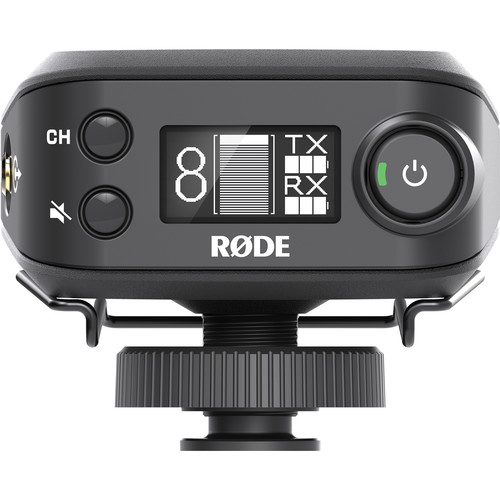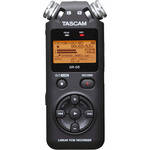Random Thoughts on Buying Gear for Film and Video
Here are some random thoughts I wrote down some time ago. Maybe they'll help you and maybe they wont. But here's a sample of my thought process:
Notes first written sometime back in 2014, before I had my Panasonic GH4 and Shogun recorder and my iMac 5k:
What should I buy next for my filmmaking kit? Often I find myself distracted by all the cool gear available on the market. This is a problem in two ways: 1) I lose precious creative filmmaking time by endlessly researching gear and 2) I sometimes get my priorities mixed up and end up with the wrong gear, at least it is wrong from the standpoint that it doesn't help me solve my most pressing filmmaking issues.
Here are a few ideas that I've attempted to use to work through this dilemma…
First, I list out the problems that I'm trying to solve for my current or upcoming project. I don’t worry about priority yet, just all the issues that I need to or would like to solve. I avoid listing gear, just list the problems I need to solve.
- No 4:2:2 4K record capability
- Lack of stabilized movement
- Mediocre audio quality with indoor dialogue in particular, but also outdoor
- Difficulty getting colors right when color correcting/grading
- Framing issues
- Lack of energy in recordings
Next, work through the list and choose the one that will make the most difference or, in some cases, simply must be done first because of client needs.
In this case, I chose color—I seem to really struggle getting consistent color and can never seem to really tell what my video is going to look like because I don’t trust my two monitors…
Next, think it through, what is the problem if you think it through in greater detail?
I don’t trust that either of my monitors closely represent the standard color space, gamma, etc. where my videos and films will be viewed. When I see my finished videos on other peoples’ monitors or projectors or TVs, they look different than on my PC monitor. Where will they be viewed? Mostly on office computers and projectors and TVs. But mostly on PCs. However, it is most critical that they look their best on the office projectors and TVs (where they will be viewed by larger groups).
Can this be solved with my current gear?
Maybe, but I’m not sure. I have calibrated my Dell Ultrasharp 2413 with an X-Rite i1 Display Pro and that seems to help, but it often seems too saturated and doesn’t at all match my cheapo HP monitor. Calibrating in this way is not very effective, I learn, because we're using an 8 bit color workflow via a computer video card. If colors are way off, there isn't much space to move around to compensate. It will never be amazingly accurate.
What are the potential solutions?
- Invest in a color workflow that works via a video I/O device (different than a computer video card) which supports 3D LUTs and ideally, 10-bit color.
- Buy a modest reference monitor
Added notes June 2015:
I opted not to solve this problem for now. I'm now working mainly on an iMac 5k. It is NOT a reference monitor, I know that. Colorists would scoff and some might even totally discount everything I have to say from this point forward. But let me give some context.
My jobs don't pay all that much. There is absolutely, positively no budget for a colorist in 99.9% of my jobs. My clients don't expect exceptional color (sadly). So they get what they pay for - a decent quality internal video that has not been edited or graded on a reference monitor and may look decent but may not look great.
For the record, I don't just go all cavalier. I do use an
X-Rite i1Display Pro colorimeter
to at least get me into the parking lot of the right ballpark. But I am fully aware that calibrating through a computer video card that supports 8 bit is problematic and not anywhere close to reference grade.
I will keep at this until at some point I can charge more and can afford a reference monitor. Perhaps I can start serving a higher tier client base. I'm working on it. But this is a decent start and working with a "color calibrated" iMac has produced content good enough for low-end corporate gigs.
So that's the context. And that's a problem that I opted not to solve for now.
Another thought that I don't think occurs to a lot of people. Some gear is a better investment than other gear.
I think that most sound gear, microphones in particular, are much better investments than camera bodies. Hear me out on this, it isn't quite as absurd as it first sounds.
Of course you need at least one decent camera to produce a film or video. But cameras become obsolete very quickly these days. I counted the cameras I've had over the last 9 years and I believe I've had 7. That's almost a new camera yearly. At this rate, I barely have time to get well acquainted with my camera before it is upgraded. Some DPs are so awesome that they can pull that off and adapt to a new camera really quickly. But I think many of us indy guys that don't shoot all day long every day could benefit from a little more practice with our cameras. A year may be enough time for some, maybe not for others. I personally could probably benefit from more practice with my cameras.
Now consider microphones. How many of us own a $2,000 microphone? Not many is my guess. I certainly don't and I'm a self-professed sound enthusiast.
Back to cameras. How many of us own a $2000+ camera? I do and probably a lot more of us than those that own a $2000 mic.
Schoepps Collette Series MK41 Supercardioid Microphone Set
Now try an exercise: Choose a movie and watch one scene from the movie two different ways. On the first viewing, don't watch the visuals, just listen to the sound. Second time, just watch the visuals and turn the sound off.
Which had more emotional impact? Which was easier to follow?
I'm betting that in most cases, it is easier to follow and there is more emotional impact from the audio only experience. That's not always true and of course we all want stunning visuals and awesome sound. But if you have to cut back your budget a little on one to invest in the other, it might make sense for most of us who have skimped on audio gear to re-allocate our budgets a little and use more for sound and a little less for cameras. Don't get angry. Just think about it. It may not apply in your case but for most of us, I bet it is a valid point worth considering.
To be clear, I'm not saying you should spend thousands on audio gear and just work with a $500 USD camera with a kit lens. But on the other hand, I am suggesting that might help get you out of a creative slump in you're in one.
Of course lenses are also probably a better investment than camera bodies in most cases. So there's that to consider.
Zoom H6 Audio Field Recorder
But I think my next big, multi-thousand dollar investment is going to be either a mic or a good solid field recorder. And to make a step toward that goal, in the next few weeks we're going to have a look at the difference between $200 - $400 field recorders and a Sound Devices audio interface that costs $900 (and only has two mic inputs). To do this, I'm borrowing a Zoom H6 and Sound Devices USBPre 2 to compare with my trusty Tascam DR-60DmkII. I opted for the USBPre 2 because it is really a proxy for a Sound Devices 700 series field recorder that many pros use. It has the same preamps and analog to digital converters. So it should give us a good idea of what a $3300 Sound Devices field recorder or mixer would do for us.
Now before you cry, "But that's not a fair comparison!" I totally get that. I'm not trying to compare, really, just answer the question, "What practical benefits do you get when you use a pro level field recorder?" I'm guessing that the difference in audio quality is not worlds better. Probably a little better, but not night-and-day different. I bet reliability and routing options and flexibility and powering options and durability are better on the pro units. But we'll see.
Thanks for enduring my rambling thoughts. I'm not sure whether this has helped anyone aside from me so you're a good sport for reading through if you've made it this far!
RODELink with Multiple Transmitters?
The question has come up several times now, "Can you transmit from two mics and transmitters to a single receiver with RODELink?"
Short answer: No.
There are wireless systems where you can transmit from multiple body packs to a single receiver, but the receivers are large, usually metal case deals that would not be fit for rigging on a camera and they usually include an AC to DC power brick adapter. These are really designed for live sound and concerts.
The RODELink, just like all the other wireless systems designed for film, video, and ENG are designed to work in the field without AC power and to be small enough to rig on a camera if you're using one or two units.
So, if you're shooting an interview, you will need two kits, each with a transmitter and receiver. But then the question becomes, how do you get the signal from two receivers into your camera that only has one 3.5mm TRS mic input? (often these are referred to as stereo minijack inputs - same thing)
There are probably a lot of other ways, but I use my Tascam DR-60DmkII instead of my camera. But even this only has one 3.5mm input. Not to worry, RODE offers a 3.5mm to XLR adapter for this very purpose! They call it the VXLR adapter and it allows me to plug two RODELink receivers into the two XLR inputs on the DR-60D.
I usually just record the audio with the Tascam and then sync the sound with the video in post. But some people hate doing that and are willing to sacrifice 24 bit audio for 16 bit camera audio. And I get it, there's plenty of debate out there as to whether 24 bit is all that critical. For the record, I always record 24 bit. I'm not saying you have to but here's my reasoning: It uses up very little space relative to high bit-rate video and gives me more latitude to clean things up in post. And for those that argue it doesn't make a difference in post, I'd love to see a specific, compelling example you can show to prove that. Also, syncing in post is really easy. If you're doing a ton of clips, yeah, that's harder and maybe in that case you need Pluraleyes (software from Red Giant that automatically syncs all your audio and video clips from a shoot) to do that for you.
But if you just cannot bother with all that, you could just run the signal out of the Tascam's output to the camera's mic input and then you're all set!
Someone also asked if they could just use a 3.5mm splitter to get the signal from the two receivers into the camera. In theory that should be possible. Of course you're back to using the camera's preamp (which is pretty poor quality with most cameras that have 3.5mm inputs) and 16 bit audio for most cameras. So, your results may be less than optimal.
If this is your first exposure to the RODELink wireless mic system, we've done a couple of video episodes on it so far that you might find interesting:
RODELink Distance and Interference Tests
One of my biggest concerns when I first heard about the RODELink wireless lavalier system was how well they would hold up in environments with a lot of potential interference, like corporate offices with lots of wifi network activity. Also, I was curious to learn how well it would perform when you use two kits simultaneously. So in this episode we put the RODELink to the test in two scenarios: First, we have our actors walk around a corporate office away from the receiver unit until we experienced the signal dropping. We also recorded a mock interview with two kits in a wifi heavy office building. Let’s see how RODELink held up!
(Pretty well, it turns out)
New RODE VideoMic Pro 2015: Overview and Demo
I will start by saying that I am not a fan of on-camera mics, even things like cold-shoe mount shotgun mics. There are two problems with using shotgun mics on the camera: 1) The camera is almost never close enough to the talent for a short shotgun mic to get a good dialogue recording without picking up lots of ambience. If that's the sound you want, then this is fine, but usually we're looking to eliminate most of the ambient sound and noise. 2) the mic is pointed not only at the talent, but at all the other sound and noise behind the talent or reflecting off the wall behind the talent. That's not quite as big a deal, but still a problem if you're trying to get just the dialogue.
However, cold-shoe mount mics can be used closer to your talent. And the newly redesigned (2015) RODE VideoMic Pro with Rycote Lyre shockmount is a fine candidate for this. In this episode I demonstrate the difference between using it on camera and using it boomed within 40 - 60cm of your talent.
But of course, you have to find a way to get the mic connected to your camera if you're operating 6 feet away from it. And my favorite options are these:
RODE VC1 (10 foot extension cable). This is the least expensive option and simply allows you to run the cable from just over your talent to your camera. Works great if you're still within about 6 feet of your talent. Runs for around $10 USD.
Zoom H1 or Tascam DR-05 Audio Field Recorders. I have the H1 but if I were buying today, I'd go for the Tascam because of its slightly better build quality. These allow you to connect the mic directly to the audio recorder. These are so light weight that you can just put them up on a stationary boom in studio, or combine it with the VC1 extension cable. The advantage with this approach is that these recorders will almost certainly record higher quality sound than 99% of cameras. On the downside, if you really want to look at it that way, you will have to sync the sound to the video when you edit in Premiere, Final Cut, or which ever editing app you use. It is super simple and worth the 10 seconds of extra work from my point of view.
Then, of course, there's the issue of how to boom the mic. This is a little more complicated but here's a reasonably affordable way to boom the VideoMic Pro if your talent will be sitting in one place.
Just another option to consider for capturing quality sound for your film and video projects.
What's the Difference Between a $200 Field Recorder and $900 Audio Interface?
https://youtu.be/TRoIMPHS91U I've been using a Tascam DR-60DmkII Audio Field Recorder to capture the audio for my film projects and am quite happy with the results in almost every case. And while I'm really happy with the Tascam, the DR-60DmkII isn't perfect. The build is quite plasticky and the battery life isn't amazing. So I attached a massive USB battery to the back of the recorder with industrial grade velcro and that powers the recorder for longer than I am able to measure (I suspect about 50 hours because I have to charge it every other month or so). And that's with the recorder phantom powering mics.
But why do the pros use things like Sound Devices and Zaxcom field recorders that cost thousands? Is it that the pre-amps are night and day better? Better build quality? Better analog to digital converters? Lower self-noise in the signal path? More audio processing features built-in?
Here's my guess:
More durable build quality as in solid metal or carbon fiber body, bigger, more durable potentiometers (the fader knobs)
Cleaner pre-amps with more gain
Better analog to digital and digital to analog converters. In practical terms this should result in being able to capture a greater dynamic range in terms of amplitude (just like on cameras where a camera with more dynamic range can differentiate between a wider range of luminance values and often makes for more pleasant highlight rolloff)
More routing options, and especially more pro grade outputs (XLR outs, sometimes just stereo, but sometimes even more). At a practical level, this makes it so that you can meet requirements that often come with higher budget shoots. For example, while you'll record the production audio on your pro-level audio recorder, you'll also send a stereo mix to camera
Often, more robust powering options either built-in or by using robust connectors for external batteries and AC adapters.
High quality timecode generators
I have my suspicions and I think it might be time to test two of these hypotheses: Cleaner pre-amps with more gain and better analog to digital converters.
To do that, I sort of wanted to dip my toes in the water without making a huge financial commitment. So the very kind folks at B&H have arranged to lend me a Sound Devices USBPre 2. No this is not exactly a field recorder, it is more of an audio interface that you would normally pair with your desktop computer. However, it has the same pre-amps and AD converters that all of the 7xx series recorders from Sound Devices have. So that allows us to compare the difference of those two dimensions in the real world.
The USBPre 2 looks like a pretty interesting desktop audio interface. In terms of specs, it is better spec'd than my current Focusrite Saffire Pro 24DSP in terms of AD dynamic range and amount of gain. But specs, of course, never tell the entire story. And in fact, this would be a step back in some ways from the Focusrite in terms of the signal processing that the Focusrite offers - real time compression and EQ. And while I don't use the EQ all that much, I do sometimes use that compressor when recording live like on Google Hangouts. No biggie. It isn't like I have to get rid of my Focusrite if I were to invest in the USBPre 2.
Its on it's way so standby for updates over the next few weeks and let me know if there are any specific questions or curiosities you might like to explore in the test.
RODELink Wireless Audio: Initial Test & Overview
https://youtu.be/o6P59ZxpANI You voted that you wanted a review of the RØDELink wireless audio system a few months back and here is the initial test as I put together the full review over the next few weeks. So far, this system looks like a nice fit for enthusiasts and pros working with small crews. One thing that really impressed me was that the Filmmaker kit comes with the RØDE Lavalier microphone which on its own is normally a $250 US microphone which is more than half the price of the filmmaker kit. In my initial tests I have not experienced a single drop out though admittedly, I haven’t yet stress tested it by taking two units into a heavy wifi environment (that’ll come in the full review). So I hope this whets your appetite while I work on the full review.
My initial impression is that the RODELink Filmmakers Kit hits a very nice combination of price to build and audio quality. We're planning some stress tests (throw a bunch of wifi at it and record with two transmitters and receivers in an interview, distance) and should have the full review up in another couple of weeks. Let me know if you have any questions you would like answered specifically!
Will That Microphone Work With My Recorder/Camera? Plugs, Power, Connectors
https://youtu.be/n6C6yzt2Hgc As you might guess, this is a question that almost everyone asks when getting started with sound for video and film. It isn't the sexiest subject, but it was time. I hope this helps those of you that are scratching your heads, trying to figure out which mic you need to begin your audio journey.
In this episode we cover the different types of microphone plugs and power so that you can find a combination that will work for you. We’re not covering specific mics and cameras and recorders, but teaching you the various types of plugs and power so that you can find a combination that works for you.
To access the links, view the video over on YouTube and check out the about section (you can get to it by hovering over the video and clicking the YouTube icon at the bottom left).
Monitoring Audio: Headphones or Near-field Monitors?
 If you're looking to improve the sound for your film or video projects, you need a way to listen to your sound so that you know whether it's as good as you'd like. If you're like me, you're not doing your audio post-production work in an acoustically treated studio or control room. More likely you've got a home office or spare bedroom.
If you're looking to improve the sound for your film or video projects, you need a way to listen to your sound so that you know whether it's as good as you'd like. If you're like me, you're not doing your audio post-production work in an acoustically treated studio or control room. More likely you've got a home office or spare bedroom.
And you don't typically want awesome hi-fi speakers for this job because hi-fi speakers are meant to make everything sound as good as possible. They are usually designed to add a little more bass and a little more treble.
What you really need is a brutally honest sound that is as accurate as possible. And that's the job of near-field monitors and reference headphones.
So in cases like mine where you're working in a spare bedroom, do you go with near field monitors or do you go with a good set of headphones? Do you try to acoustically treat your room? Ideally, both.
That's a tough question that I haven't totally answered even for myself. I have a set of the KRK Rokit 8 near field monitors. But they're not exactly perfect, particularly since the room I'm working in is FAR from acoustically perfect. I recently bought a reference measurement mic and used FuzzMeasure to see how long various frequencies hang around in my room. It wasn't pretty at all. Like almost all small household bedrooms, the bass lingers forever. And you might think, "You must get amazing bass sound in that room." But no, it is actually quite the opposite. The bass is mushy and creates all sorts of comb filtering. So I'm not getting an accurate picture of my recordings at all. How frustrating!
So I've got a DIY project in motion to see if I can address that issue by trapping some of that extraneous bass. More on that in the future.
I also have a set of Beyerdynamic DT770 Pro 32 ohm headphones that I bought several years ago. These are closed-back headphones that sound very good, but they have a closed back design. This makes them very good for use when you're recording (so that sound doesn't spill out and back into the mic) but to get the most accurate sound, most reference headphones have an open-back design. Evidently you just can't get reference accurate sound in a closed back design.
So I'm now on the hunt for a decent pair of reference headphones. I've got my eyes on the AKG K712 Pro reference headphones. Anyone out there have experience with these? There are several other options in the same pricerange. Audio Technica has a new offering but their marketing materials say very little about accuracy. I realize that's very difficult or impossible to capture in specifications.
How to Mix Dialogue with Music for Film and Video
https://youtu.be/fvUn8l30VLc I’m mixing a scene from a feature length film and one of the challenges is that the dialogue and music in this romantic scene are sort of competing with one another which makes for a rather distracting experience. To help the two get along, I ended up using a technique that almost every music mixing engineer uses all the time: EQ. I just cut some of the mid frequencies from the music track to make room for the dialogue because the mid frequencies is where most dialogue sits. And now, they get along so much more nicely. The romantic scene feels romantic!
Check out ValdenseFilms.com for details on their upcoming film, Conflictus.
Tascam DR-05: Small Recorder with 3.5mm Input for Lavalier Mics
If I were working with a budget of $150 USD to get a decent "wireless" lavalier microphone setup, I would look to the Tascam DR-05 Audio Recorder and JK MicJ 044 lavalier as a solid combination. The nice thing about this combination is that the talent aren't tied to a single spot and can work untethered. Then you just have to sync the audio to the video in post which is not nearly as difficult as we often assume:
Why the Tascam over the Zoom H1? Feature wise, they are nearly identical. Audio quality wise? Nearly identical. The main thing that would push me to the Tascam is that build quality is just slightly better than the Zoom. The plastic is slightly higher quality. Some say that the preamps are slightly less noisy though I haven't confirmed that 100%. They're certainly in the same league as the H1.
Sony Sound Forge Audio Studio with the Tascam DR-05 which is a nice little addition if you don't already have an audio editing app.










 Support Me on Ko-fi
Support Me on Ko-fi
